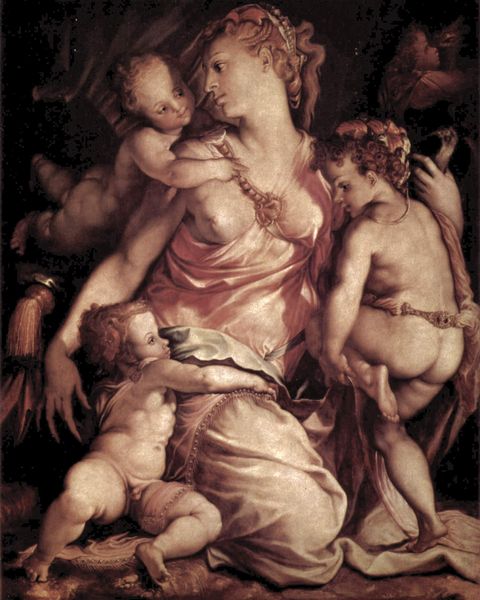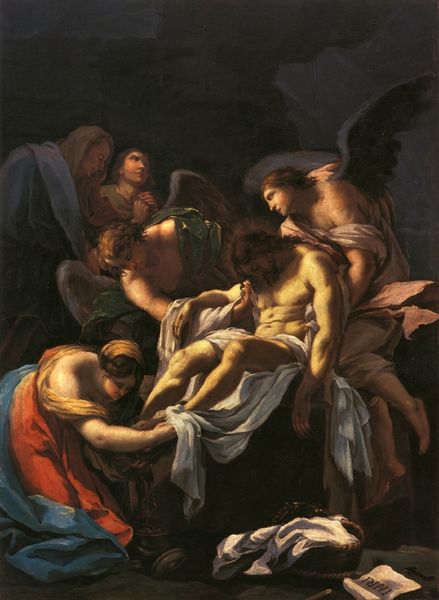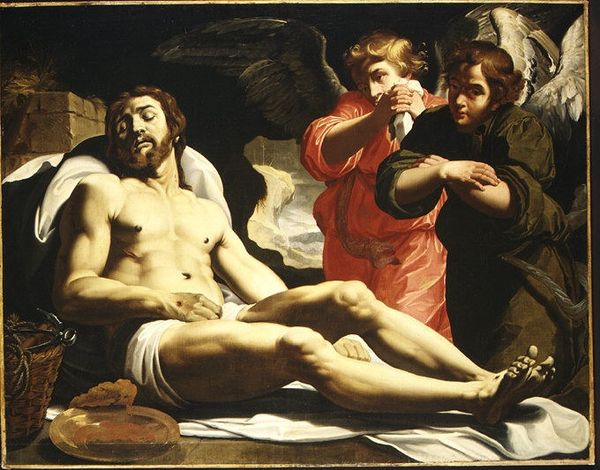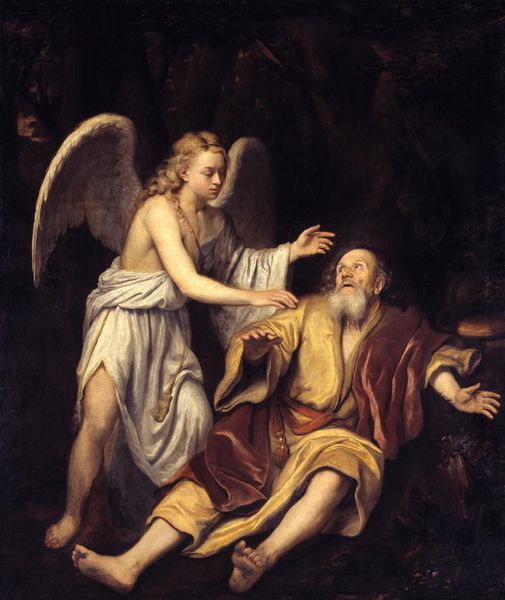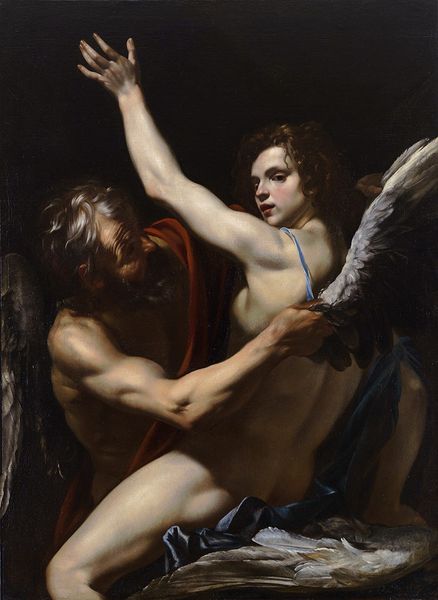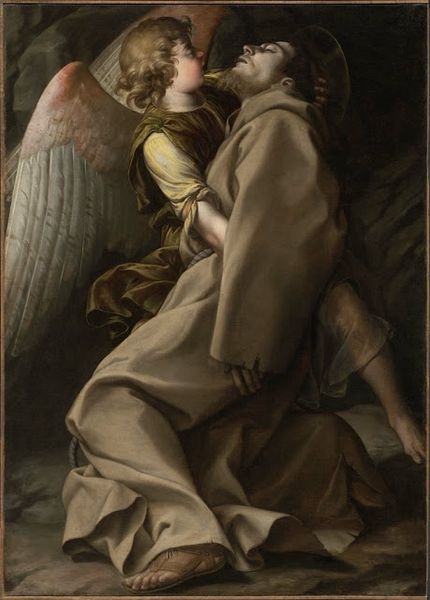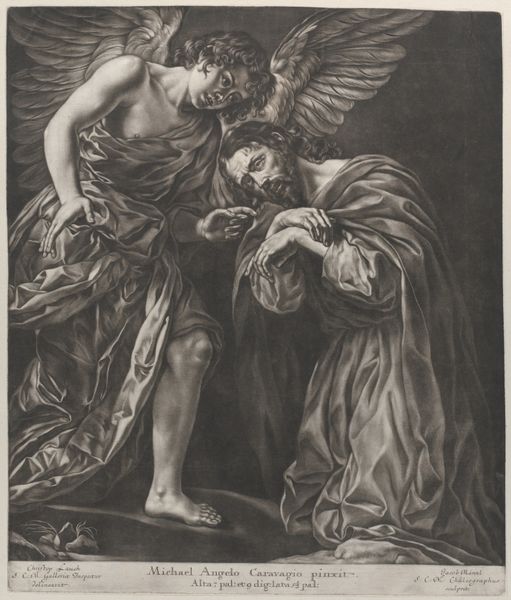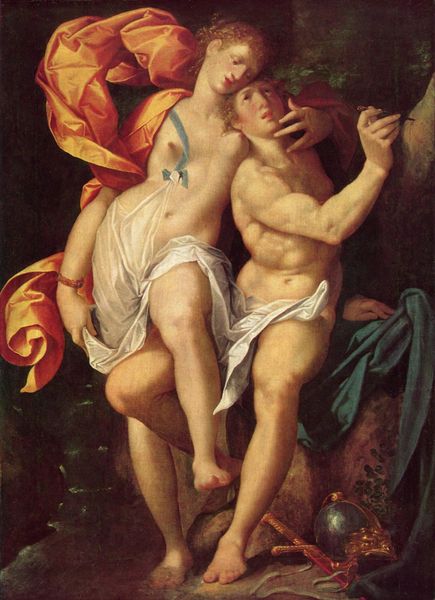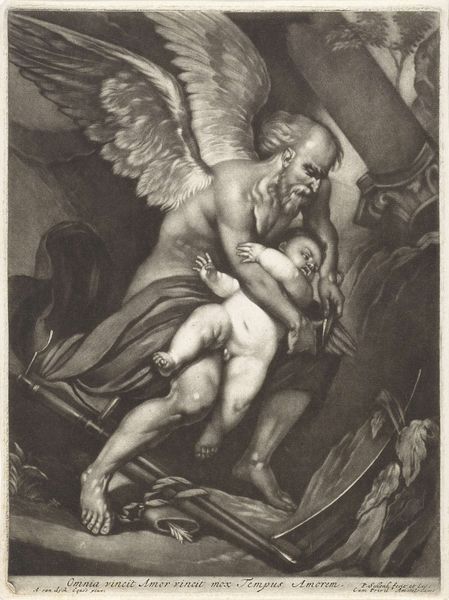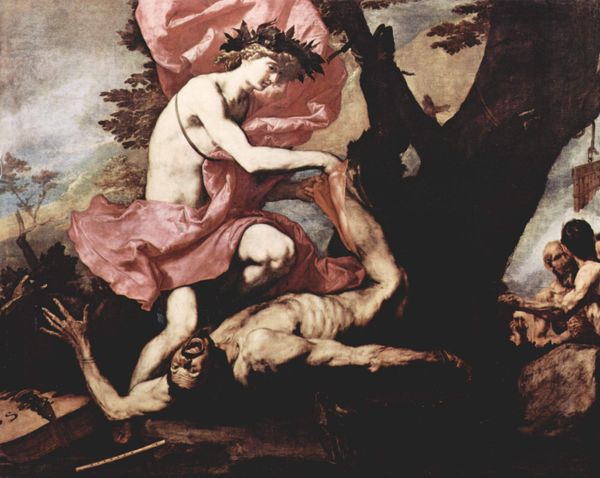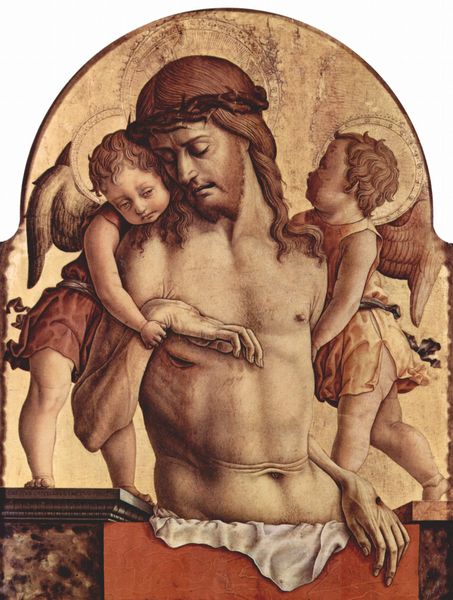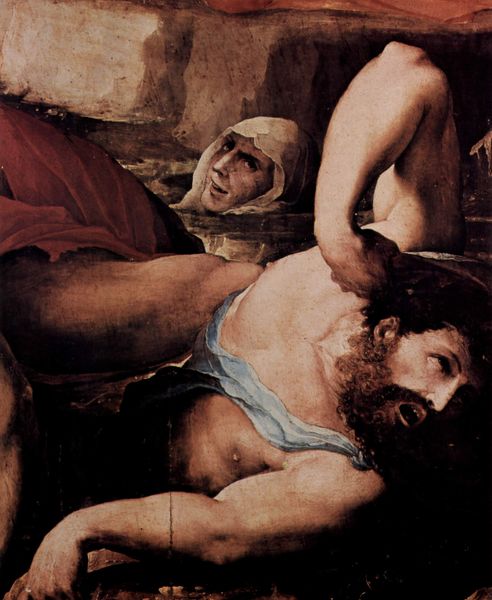
painting, oil-paint
#
portrait
#
allegory
#
narrative-art
#
baroque
#
painting
#
oil-paint
#
arch
#
christianity
#
animal drawing portrait
#
portrait drawing
#
history-painting
#
portrait art
#
angel
Dimensions: 232 x 183 cm
Copyright: Public domain
Curator: Looking at "Saint Matthew and the Angel" by Caravaggio, painted around 1602, it's impossible not to notice the artist's dramatic use of light. What springs to mind for you when you see it? Editor: Immediately, I'm struck by how intensely human Matthew is. Bald patch, furrowed brow, slightly grubby feet even. It's as if Caravaggio’s dragged him straight off the Roman streets. Curator: Indeed, Caravaggio was renowned for his naturalistic approach. The Counter-Reformation had called for art that spoke to the everyday believer, not some idealized vision. His work often portrays biblical figures as common people, bridging the gap between the divine and the mundane. Editor: And the angel, too, isn't your typical celestial being floating on clouds. She is right there, physically close to Matthew, almost whispering in his ear. I find the composition incredibly intimate, you are almost trespassing. It’s really more collaboration than dictation. Curator: Precisely. And you can see this as a turning point in depictions of Saint Matthew. Before, the Evangelist was commonly portrayed in a more dignified manner, often seated formally and writing. Caravaggio presents us with an active moment of divine inspiration but through very human interpretation. Unfortunately, this work was destroyed during WWII so we're working from an image only. Editor: What a loss! Although looking at the image of it, one wonders about that divine inspiration though, right? Matthew's brow is so furrowed, he looks almost irritated by the angelic prompting! Curator: (Laughing) That reading fits well with our modern sensibility, but more profoundly it underlines the very active role that the Bible, and religion plays for humanity as not being handed down completed truth. And of course that's what made it too real for its original patrons. Editor: It's fascinating how a painting, even just a copy of a painting can spark so many interpretations and emotions centuries later. I suppose that's the real magic, that continued engagement. Curator: Absolutely. And considering the sociopolitical role this artist played for his time and its echo today...a lot to think about with such art still, indeed!
Comments
No comments
Be the first to comment and join the conversation on the ultimate creative platform.
